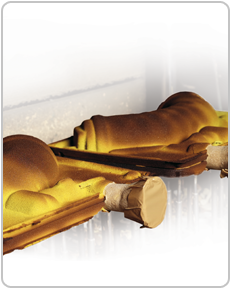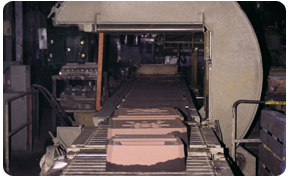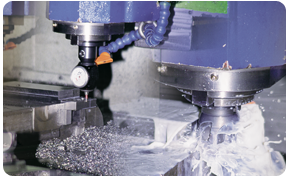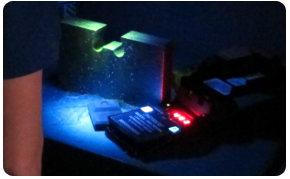Methodology
Thanks to our technical knowledge of the product and IT equipment, we are fully equipped to plan and optimise design, moulding techniques, casting, machining and heat treatment. The quality of our products is guaranteed through close monitoring of the entire manufacturing process.
- Tech. Services Team
- Shell Moulding
- Chemical Moulding
- Heat Treatment
- Machining
- Nondestrictuve testing
Technological Services |
 |
The company's Technological Services Team was created with customer involvement in mind and to put the principle of joint development of the pieces into practice. The more we take into account the function of the pieces during the design phase, the easier it will be to use modern technical procedures and comply with the level of quality established in the customer's specifications. |
Technological Services Team

The company's Technological Services Team was created with customer involvement in mind and to put the principle of joint development of the pieces into practice. The more we take into account the function of the pieces during the design phase, the easier it will be to use modern technical procedures and comply with the level of quality established in the customer's specifications.
Shell Moulding |
This method offers excellent possibilities for the production of pieces with complex geometrics, high superficial finish and tight tolerance.
|
Schematic description of the shell moulding system: |
|||||||||||||
 |
Shell Moulding
This method offers excellent possibilities for the production of pieces with complex geometrics, high superficial finish and tight tolerance.
The moulding material, consisting of sand and resin which hardens when heated, is poured onto the plates of the model, which have been heated beforehand. Depending on the reaction time a layer of varying thickness is formed, called the shell. This is removed from the model sticking to the other half, in such a way that a mould ready for casting is created.
The shells are created using grey iron or steel models, which are mounted on grey iron plates. The useful life of these models is much longer than those made from wood.

Plate dimensions: |
2kg - 200 kg |
Plate dimensions: |
600 x 800 mm |
|
400 x 600 mm |
|
900 x 450 mm |
|
1000 x 1000 mm |
Series: |
200 x 10.000 pcs/mo |
Schematic description of the shell moulding system:
1. Metal plate with ejectors.
2. The material is poured into the mould, and the heat of the plate causes bonding of each grain of sand.
3. Hardening of the half shell using heat.
4. Removal of the now hardened half shell.
5. Gluing and sticking of the half shells, forming a full shell mould.
6. Filling of the mould.
Chemical Moulding |
Sand casting is the most commonly used process, and this method is used to produce the majority of the total tonnage produced through casting. Almost all alloys can be sand cast and the process also allows for the casting of unitary production series. Sand casting consists of emptying the melted metal into a sand mould, leaving it to solidify and then breaking the mould to remove the cast. The cast is then put through a process of cleaning and inspection. Sand casting requires a pattern or model in the size of the part, slightly enlarged, taking into consideration contraction and the tolerances to enable the subsequent machining of the piece. The models used are made from wood as this is a self-hardening treatment process at room temperature. As part of MEIN's philosophy of being strongly committed to people and the environment, the company uses a furfuryl alcohol (Furanic) based resin which polymerises with sulphonic acids, a source of emissions of sulphur dioxide. Low sulphur systems help to drastically reduce SO2 emissions. As well as reduced sulphur dioxide emissions, another attraction is a reduction in the level of sulphur in the recovered sand, which has significant benefits in the production of high quality steel pieces. The way in which low sulphur systems operate is no different from conventional systems and MEIN they can work with catalysts with half the sulphur of conventional systems, thereby enabling improvements relating to the environment and safety at work. |
||||||||||
We also have a second line in moulding (sand casting – chemical moulding), which complements our product range, enabling the production of shorter series and unitary weights higher than those obtained from the shell method. |
|
||||||||||
Chemical Moulding
Sand casting is the most commonly used process, and this method is used to produce the majority of the total tonnage produced through casting. Almost all alloys can be sand cast and the process also allows for the casting of unitary production series.
Sand casting consists of emptying the melted metal into a sand mould, leaving it to solidify and then breaking the mould to remove the cast. The cast is then put through a process of cleaning and inspection.
Sand casting requires a pattern or model in the size of the part, slightly enlarged, taking into consideration contraction and the tolerances to enable the subsequent machining of the piece.
The models used are made from wood as this is a self-hardening treatment process at room temperature.
As part of MEIN's philosophy of being strongly committed to people and the environment, the company uses a furfuryl alcohol (Furanic) based resin which polymerises with sulphonic acids, a source of emissions of sulphur dioxide. Low sulphur systems help to drastically reduce SO2 emissions. As well as reduced sulphur dioxide emissions, another attraction is a reduction in the level of sulphur in the recovered sand, which has significant benefits in the production of high quality steel pieces.
The way in which low sulphur systems operate is no different from conventional systems and MEIN they can work with catalysts with half the sulphur of conventional systems, thereby enabling improvements relating to the environment and safety at work.

We also have a second line in moulding (sand casting – chemical moulding), which complements our product range, enabling the production of shorter series and unitary weights higher than those obtained from the shell method.
Range of weights: |
20 – 2.500kg |
Dimensions: |
900x 1500x 400/400 |
|
4000x4000 |
Series: |
Enables unitary production |
Heat Treatment |
 |
Our extensive experience in the heat treatment of our pieces, a vital point when it comes to ensuring characteristics such as hardness, resistance, resilience, and lengthening. |
Heat Treatment

Our extensive experience in the heat treatment of our pieces, a vital point when it comes to ensuring characteristics such as hardness, resistance, resilience, and lengthening.
We have modern facilities:
Gas furnace 2.600 x 2.000 x 800 mm 6.000kg up to 1.150ºC
Electric furnace 2.600 x 2.000 x 800 mm 6.000kg up to 1.150ºC
Air cooling, forced air or water.
Machining |
 |
Our customers want finished solutions with maximum added value, enabling them to focus their efforts on the basis of their technology. This results in the need to complement the casting with maximum precision finishing techniques. As part of its internal process, MEIN is fully equipped to offer this service. |
Machining

Our customers want finished solutions with maximum added value, enabling them to focus their efforts on the basis of their technology. This results in the need to complement the casting with maximum precision finishing techniques. As part of its internal process, MEIN is fully equipped to offer this service.
Nondestructive testing |
 |
MEIN has the resources needed for nondestructive testing (NDT), a process which must be used to guarantee the quality of the product. Radiographic (RT), Ultrasonic (UT), Liquid Penetrant (LP), Magnetic Particle (MT), Positive Material Identification (PMI) and Visual Inspection (VT) testing are all carried out by us on a regular basis. In short, we offer a highly qualified team and modern facilities which guarantee fulfilment of the product specifications. |
Nondestructive testing

MEIN has the resources needed for nondestructive testing (NDT), a process which must be used to guarantee the quality of the product.
Radiographic (RT), Ultrasonic (UT), Liquid Penetrant (LP), Magnetic Particle (MT), Positive Material Identification (PMI) and Visual Inspection (VT) testing are all carried out by us on a regular basis. In short, we offer a highly qualified team and modern facilities which guarantee fulfilment of the product specifications.


